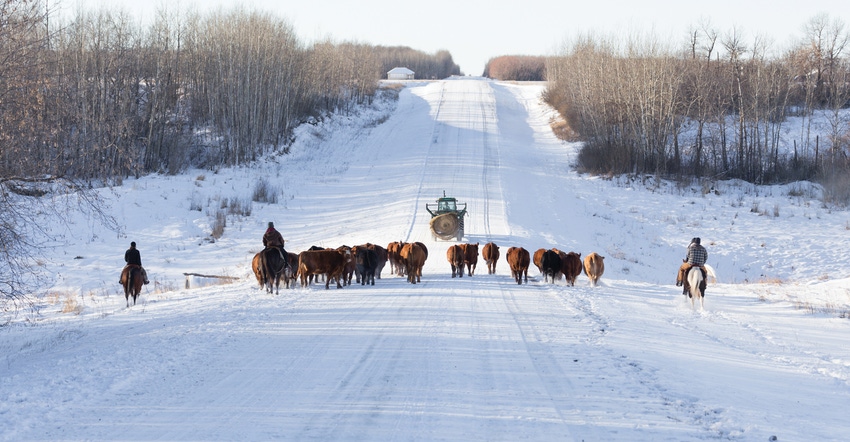February 26, 2021

This winter started out mild for most of Missouri. We saw rain in areas of the state that didn’t need it, while other areas were dry and would have welcomed the moisture. December and January came and went with mild temperatures, and many farmers were growing concerned about the lack of moisture.
Spring planting was on the minds of many of our farmers because the success of the upcoming growing season depended on more moisture for our soil. It’s no secret our livestock farmers and ranchers depend on a successful growing season for quality feed products.
Anxiety was growing in farm country, and many prayers were being said for a successful 2021 after the challenges 2020 brought for many of our farms and ranches.
And then it was February. We’ve all heard the old saying, “It's Missouri. If you don’t like the weather, wait a day or two and it will change.” And that’s exactly what happened the second week of February. The groundhog predicted six more weeks of winter, and his prediction did not disappoint.
Winter fell upon us fast and furious, and once again Mother Nature reminded us that we are at her mercy. Ice, drifting snow and temperatures below zero were the norm for Missouri for over two weeks, and it wreaked havoc for our farms and ranches that raise livestock.
Our farmers who had contracts to deliver grain were challenged to deliver the grain on time because of treacherous road conditions. Our winter weather once again reminded us that agriculture is hard.
Difficult chore time
Some of our farmers and ranchers have modernized their facilities to be more resilient to the effects of harsh winter weather like we saw in February. Modern livestock barns kept our poultry and pigs warm and dry with a continuous supply of dry feed.
That was until the blowing snow closed roads and complicated feed deliveries for many of our farms and ranches. Rolling power outages also created challenges. Backup generators were on standby, and many were needed to keep newborn pigs warm and alive.
For our cattlemen and cattlewomen, the challenges were plenty. Frozen waterers that needed thawed multiple times a day, chipping ice in water tanks and rolling out extra hay consumed a lot of their days and nights.
For those who have started calving, they spent many hours monitoring cows and moving them to barns before they calved. Drying off the newborn calves and keeping them warm required extra care with temperatures reaching minus 10 degrees F with a windchill of minus 25. I saw many pictures on social media of newborn calves being warmed up in laundry rooms of homes and in the cabs of pickup trucks.
What normally takes 10 to 11 hours to accomplish now took 15 or 16 hours in the harsh weather. Unlike cattle, our farmers and ranchers do not have thick skin and hair to keep us warm. Bundling up in multiple layers presents many challenges, especially when it comes to being able to move swiftly and quickly.
Bulky clothing is loathed by many when physical labor is required to complete tasks. You warm up quickly when chopping ice, so you remove layers, only to get chilled once the ice is broken. Many of our farmers and ranchers have experienced frostbite, but they kept going because their animals depended on them. This is the norm in agriculture; the needs of our livestock are always our first priority.
Built for farm life
Living in rural America isn’t always picturesque with green grass and sunshine. The snow and wind we experienced created many challenges. We don’t have road crews with snowplows on standby to open our farm drives and lanes.
On our farm, our road crew on standby was my husband, Kevin. He wears many hats like all farmers do. He was up many mornings before 3 a.m. to start blading our driveways and county roads. Our county road crews could not keep up, and several of our roads were impassable because of the blowing snow.
And like many farmers, he didn’t just open up the county roads for our own use. We had neighbors who had been snowed in for days and were unable to get out of their driveways to go to town for supplies.
This story is not unique to my family farm. It happens all over Missouri because agriculture is resilient, and we know the value of backup plans. We can’t wait for someone to come to our rescue; we are the emergency crew.
Our livestock, our families and our neighbors depend on us to show up, even in the rain and snow and when the sun shines. This is what we do because this is who we are. This winter has reminded us that agriculture is resilient, and this lesson in resilience and determination is what our ancestors prepared us for.
Chinn is the director of the Missouri Department of Agriculture and a hog producer from Clarence, Mo.
About the Author(s)
You May Also Like




